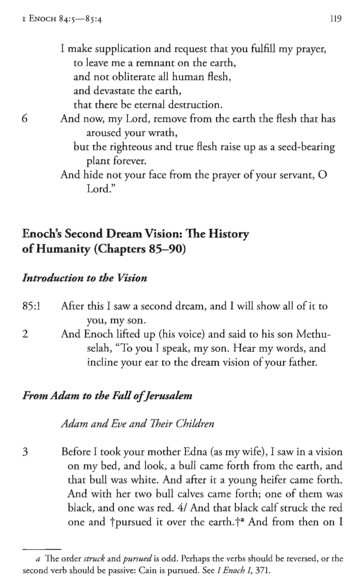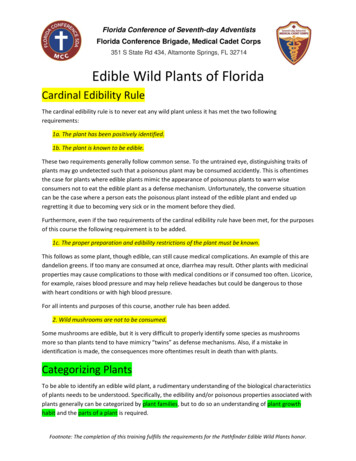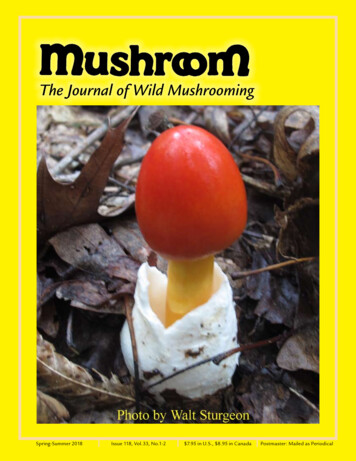
Transcription
The Journal of Wild MushroomingSpring-Summer 2018Issue 118, Vol.33, No.1-2 7.95 in U.S., 8.95 in CanadaPostmaster: Mailed as Periodical
Small spalted bowl showcasingevery type of spalting. Turnedand spalted by Seri Robinson(test tubes) Full range of colorsavailable from the four primary spalting fungi: Scytalidiumcuboideum, Scytalidium ganodermophthorum, Chlorociboriaaeruginascens, Chlorociboriaaeruginosa(Wood in the lower left corner)Green zone line from the Amazon rainforest of Peru. Manyzone lines appear black but areactually just highly concentratedcolors.(spalted wood just below) Redzone lines found in the Amazonrainforest of Peru(spalted wood bottom right corner) Red-purple pigment foundin the Amazon rainforest of PeruSee the full article on p. 15!22Spring-SummerWinter-Spring 2011,2018,MushroomMushroomthetheJournalJournal
ISSN 0740-8161Issue 118Vol. 33, No. 1-2Spring-Summer 2018The Journal of Wild MushroomingCover Photo: Amanita jacksonii photographed by Walt Sturgeon. For more of Walt’sphotos, see the photo-essay on pp. 56-7.Coordinating Editors:Leon Shernoff(leon@mushroomthejournal.com)Editor emeritus:Don H.CoombsBook Review Editor:Ron rial Advisory Board:Scott RedheadAgriculture Canada, Ottawa68David AroraSanta Cruz, California49102426Paul StametsOlympia, WashingtonJames M. TrappeOregon State UniversityRoy WatlingEdinburgh, ScotlandEd TylutkiMoscow, IdahoLorelei NorvellPortland, OregonA Term Defined, by Anne YenThe Old Art and New Science of Spalted Wood, by Seri RobinsonGetting Started at Knowing Mushrooms, by Lee SchulerA Life Full of Mushrooming, by Chuck BarrowsMushrooms and Microhabitats, by Jack WaytzAmanita muscaria – The Organometallic Dimension, by BeowulfGlutzenbaumAn Unusual Poison Control Call, by Bill BakaitisDepartments3136384654Easy Edibles: The Newish Morels, by Bob Sommer and Leon ShernoffWord Puzzle: Morel Names, by Donald and Leon ShernoffObituary: Maggie Rogers, by Betty GeringThe Cooking Column: The Joy of Black TrumpetsBook Reviews: The Forest Unseen and The Songs of Trees, reviewed byRon TracyVideo Review: The Magic of Mushrooms, reviewed by Sarah PrenticeCrossword Puzzle: Old and Bold, by Kevin WaldMyco-interview: From Long Island to North Carolina: an interviewwith Rytas VilgalysFungi around the World: Collecting fungi in the Amazonian Cerro dela Neblina, Venezuela, by Amy Rossman and Roy HallingPhoto-essay: Mushroom Colors, by Walt SturgeonContributing Editors:Bill Bakaitis Moselio SchaechterLarry EvansDick GrimmSteve TrudellTjakko StijveMushroom, the Journal of Wild Mushrooming, (ISSN0740-8161) is published quarterly by Mushroom theJournal of Wild Mushrooming, NFP, 1006 E 62nd St,Unit C, Chicago, IL 60637.Subscriptions are 32 for one year, 90 for three years, 250 for ten years, and 700 for a lifetime subscription.Checks should be sent to Mushroom the Journal, 1006E 62nd St, Unit C, Chicago, IL 60637.Checks drawn on Canadian banks should be marked“US dollars.” Subscriptions outside of North America,please add 25 per year additional postage.Periodical postage paid at Chicago, IL and additional mailing offices.POSTMASTER: send address changes to Mushroom the Journal, 1006 E 62nd St, Unit C, Chicago IL 60637Copyright 2018 by Mushroom the Journal of Wild Mushrooming, NFP. All rights reserved. No part of thispublication may be reprinted or otherwise reproduced without written permission. Advertising rates are availableupon request. Back issues are 8.95 each postpaid, four or more at 7.95 each. The journal welcomes contributionsof photos or articles, and will be glad to consider them for possible publication. An information sheet is available forpotential contributors.Spring-Summer 2018, Mushroom the Journal3
The Newish Morelsby Bob Sommer and Leon Shernoff1The morel is one of the besttasting and most sought after NorthAmerican mushroom. The only riskylook-alikes are Gyromitra specieswhich are sometimes called falsemorels. They appear about the sametime in spring as morels but areneither conical nor pitted. Morelsdry easily and I don’t wash them. Itap them on a hard surface to knockaway any dirt particles.Morels are edible and choice butshould be cooked before eaten andthe water discarded. Scattered orclustered in the wodds, or on bark,woodchips, fruiting from late winterto early summer. Some people can’teat them, which leaves more for therest of us.My last morel column in thisjournal was in 2004. Since then,several new morel species have beenidentified, mostly on the west coastof North America. I’m not sure howmany of these names will be in fieldguides in 20 years but I’ll describetheir characteristics.I’d rather hunt a tasty morel thatmay have a duplicate name than seeka dull Agaricus or Lepiota. But in thisarticle I will be a splitter (to use anolder taxonomy) rather than a lumperwho tries to bring species together.Half-freesThe DNA testing provides supportfor splitters not just in species but alsoin color categories. Back in 2004,one grouped morels into “yellows”and “blacks,” with half-frees thrownin on their own as trouble-makers.With more refined distinctionsbeing made now, mycology is nowofficially recognizing some newforms, including some new colorsand color transitions.These are true morels – with ahoneycombed head – that have a headthat projects a bit (like a skirt) wherethey meet the stalk (see the diagramon this page). They are easy to name,as only one species is recognized foreach half of the country.Morchella punctipes is the half-freemorel that occurs widely east ofthe Rockies. Morchella populophila isa Northwestern species that occursunder black cottonwoods. M. semiliberais the name in most of your books;but this is one of those Europeanspecies that turns out not to occurin North America.Color categories and habitatsOne can take the traditional colornames as representing the colorof the ridges on the honeycombedhead more than the color of thehead overall. The ridge edges ofblack morels will often look singed,because they are so much darker thanthe rest of the cap; and yellow morelscan be quite brown in the honeycombpits, but will have lighter ridges.There are also three main habitatsfor morels. Some morels come outthe year after forest fires, and theseBob is handling the west coast species and most of the general text here; Leon handles the eastern species and the text for the color-categories. Basicallythis is one of Bob’s regular Easy Edibles columns with some extra ID information from Leon. The pronouns “I” and “my” all refer to Bob.14Spring-Summer 2018, Mushroom the Journal
like honeycomb cells and more liketwisty passageways. These can getpretty big. These are the ones thathave traditionally gone under thelumper name of Morchella esculenta.but the pits can remain dark forquite a while. It occurs in states andprovinces along the border betweenthe US and Canada, from Quebec toMontana.The other group has gone underthe name of deliciosa. They’re abouthalf the size of the first group, andthey usually have some pretty straightvertical ridges, so the spaces betweenthem look more like honeycombcells.See also M. rufobrunnea, under thestrange ones (below).The big (esculenta-type)yellow morelsYellow esculenta-type morels (probably Morchella americana) showingthe long, winding walls on the head,making for labyrinthine crannies.are known as burn morels. Othermorels come out under pretty muchthe same circumstances as othermushrooms – when their habitat ishappy, the season is right, and theyget enough rain. These are called“naturals.” The third group comesout in “disturbed ground” – placeswhere humans or nature have doneexcavation or other disturbancesand rearrangements of the soil. Inhomage to the human role in manyof these disturbances, these are called“landscape morels.”There is no intrinsic relationshipbetween a morel’s color and itslifestyle: all burn morels are blackmorels; we have both yellow andblack “naturals”; and we have oneyellow and one black landscapemorel.YellowsYellow morels have a pale head,often with a yellowish cast to itwhen they are mature. There are twogroups of yellows: one has randomlyoriented, often twisted ridges; so thespaces between the ridges look lessMorchella americana, M.ulmariaCap 20-110 mm tall, 15-40 mmwide. This is the most commonyellow in North America, and iswidely distributed throughout thecontinent. It can be quite dark whenyoung, but becomes gray or yellowat maturity.They start out life a pale grey andremain that color if they don’t getmuch sunlight, leading some localfolks to theorize that “grays” and“yellows” are a different species.And as far as eating goes, theymight as well be, as they develop avery different flavor when they turnyellow.M. ulmaria often appears identicalto americana, and cannot be reliablytold apart from it without samplingthe DNA (leading to the synonymM. cryptica). It grows in Midwesternhardwood forests, especially underwhite ash, american elm, and tuliptrees.Morchella pravaCap 30 - 60 m m ta l l, 2 0 -50mm wide, often roundish or evenf lattened, and the head is oftendimpled or twisted. Its ridges arealmost white from the beginning,Deliciosa-type morels, showing themore rounded cap and the cap cellsthat are not long and winding butalso not vertically stacked.Illustration from Émile Boudier’sIcones mycologicæ, ou Iconographiedes champignons de France, Volume2 (1910)Little (deliciosa-type)yellow morelsMorchella diminutiva &sceptriformisM. diminutiva has a cap 15-50 mmtall, 10-30 mm wide, and sceptriformishas a slightly larger size range.Otherwise, they are indistinguishablewithout a microscope. Their headtends to be more rounded – lesstapered, less pointy – than M.americana.Spring-Summer 2018, Mushroom the Journal5
M. diminutiva is found throughoutNorth America, under a variety ofhardwoods; sceptriformis is found inwet areas under tulip trees in thesoutheast ( Virginia to northernMississippi).Black morelsBlack morels can be all dark; orthey can be tannish with dark ridges.When young they can be quite pale.But another way to tell them apartis that the pits on the cap tend tobe vertically arranged – that is, thecap has many long, vertical ridges,connected by short crosswalls atirregular intervals, so their pits areoften rounded rectangles. Kuo (2012)calls this arrangement “regularlyladdered.”The half-frees are geneticallycloser to the blacks than the yellows,and this can be seen where the capjoins the stem. Although black morelsdon’t have the full-fledged “skirt”of the half-free morels, the head ofblacks will often project a little bit,creating a small groove under theoverlap that Michael Kuo calls an“ant racetrack.”Black naturalsMorchella angusticeps,brunnea, septentrionalis/pulchellaCap 30-80mm tall, 20-50mmwide. The default natural black morelis angusticeps in the east, brunnea inthe northwest. Morchella septentrionalis(which is probably the same as theEuropean species M. pulchella) is asmaller, more northern species inthe east that often fruits from or nearfallen hardwoods.Morchella snyderiCap 35-80mm tall, 30-50mmwide. Found in the northwest. Thecap ridges are initially yellowish tan.6Spring-Summer 2018, Mushroom the JournalThe illustration from the original description of Morchella eximia, from ÉmileBoudier’s Icones mycologicæ, ou Iconographie des champignons de France,Volume 2 (1910).Typically for black burn morels, the cap is arranged in long vertical ridges withshort crosswalls creating “regularly laddered” pits. The illustration also shows the“ant racetrack” groove between the bottom of the head and the stalk.They will darken as it ages or driesand become brown or black, but inthe meantime, it is easy to mistakefor a yellow morel. Kuo reports that“collectors often find Morchella snyderiin a sort of transition stage, in whichthe ridges are yellowish toward thebottom, but have begun to blackentoward the top.” The stem developsridges and pockets in maturity, andthese are the best bet for telling itapart from other morels.It is not a burn morel strictlyspeaking, but it will colonize burnedareas before the other naturals do,and will come out the year after afire on unburned areas within theaftermath of a fire.Michael Kuo named it after LeonSnyder, who first gave this mushrooma scientific name and descriptionin 1938. Snyder’s name was invalidbecause his type collection includedmore than one species of morel;but Kuo says he did not wantSnyder’s work to be forgotten, sohe commemorated Snyder with thisname.Typical western burnmorelsMorchella eximia, exuberans,sextelataBlack Morel, Pink Morel,“greenies”Cap 20-80 mm. tall, 20-65 mmwide; edges bluntly rounded. Edgesbrown to pale brown to dark brown,often on burned soil, sometimes inabundance on lightly burned soil.They emerge early in the season,“right after [the] fruiting of thenatural black morels” according toBeug et al (2014).These three species cannotbe distinguished from each otherwithout further science. As withthe yellow morels, there are manymisapplied names for these.When pale they can have a pinktint to them; and when darker theyoften have a greenish cast. They sharethese color forms with other westernmorels (especially M. tomentosa) and(as with “grey” yellow morels in the
east) these colors do not indicate adifferent species of morel. To quoteBeug (2014), p. 194: “Commercialpickers know these four burn morelspecies as “pinks” and “greens,”but the coloration of each isvariable, and color cannot be used todistinguish between them.”The reason that Beug et aliamention “four” kinds of burn morelsabove is that they listed anthracophila,carbonaria, and septimelata along withsextelata, but Richard et al (2014,published later that same year)showed that the first three of thesewere the same thing as the Europeanspeces Morchella eximia. So everyonecan feel better about not being able totell them apart. Boudier’s illustrationfrom the original description of M.eximia is shown on the facing page.Among the three recognized here,Morchella exuberans is microscopicallyunique: its ridges have numerousprotruding cells with a rounded head,making them “capitate,” and givingthe reason for the synonym Morchellacapitata. But to distinguish M. eximiafrom M. sextelata, it seems that oneneeds to run DNA.The fuzzy burn morel:Morchella tomentosaA distinctive black morel foundin burn areas of western NorthAmerica. When young the cap andstem are covered in dense hair.It appears bald in age but Beuget alia say that even then underthe microscope one can still find“abundant brown hyphal tips” onthe stem and ridges.It starts out silvery gray, usuallybecoming a dark uniform blackish inmaturity but the black surface “sooncracking and breaking away to exposewhite to ivory underlying tissue” sothat it looks blond in age. But thereare no burn yellows.This one fruits later than theother black morels: in late spring andsummer, sometimes even August orSept if the forest stays moist. It ismost abundant at high elevations, andhas a northern distribution, near theborder with Canada.Western landscape morelMorchella elata ( M.importuna)This black morel is one of ourtwo landscape morels in NorthAmerica. The other is the much moreyellow(ish) M. rufobrunnea. Morchellaelata is a typical black morel – pointycap, vertically arranged ridges – but itcomes out in “disturbed areas.”This was named as Morchellaimportuna by Kuo et al (2012) and thatname is still very popular – we’veretained it in Jack Waytz’s article onp. 58 because more people in thewestern US have a concept for it.However Kuo (2012a) was absolutelycorrect when he saidI will not be surprised when amuch older, European name isfound for Morchella importuna; Ihave studied a collection thatwas sent to me from Belgium,and verified through DNAAlthough we’re calling these“western” species, there has been anexciting find for those of us who, inour childhood, haunted the burnt-outcampfire sites of our local NY woods[cough, cough] in an attempt to findburn morels in the east. Miller et al(2017) identified Morchella exuberansas the burn morel at forest fires inMichigan and Tennessee.The paper says these morelsare found at “conifer burn sites,”which might explain their relativeinfrequency in the east, where mostof our forests are hardwoods. Besidesthe two burns examined in the paper,the authors also mention previousreports of burn morels from coniferforests Minnesota and Ontario.Photograph of Morchella tomentosa by Michael Kuo, showing the fuzzy tomentum that gives it its nameSpring-Summer 2018, Mushroom the Journal7
analysis – and there are severalEuropean morel species that appear, based on photos,to match the morphology andecology of Morchella importuna.Some Morchella synonymsThe name in bold is thecurrently correct name, and it isfollowed by its synonymsexuberans: capitata.eximia: anthracophila,carbonaria, and septimelata.elata: importunaulmaria: crypticaamericana: crassipes, populinatridentina: frustrataRichard et al (2014, also mentionedin the discussion of burn morels)indeed found that M. importuna’sDNA was identical to the much olderEuropean species M. elata.Other color-formsMorchella frustrata ( M.tridentina)The name (given by Kuo) saysit all. This species easily confuses.It is a black morel that isn’t black.A PNW species, it is known as the“mountain blond.” The only knowncompetitors in ID are true yellowmorels and M. snyderi. But it has the“ant racetrack” that yellows lack; andit doesn’t develop the fancy stem ofM. snyderi. It can be gray, brown, andoccasionally even whitish.The same 2014 paper by Richardet alia found that this is the same asthe European species M. tridentina.Morchella rufobrunneaThis is the yellow(ish) landscapemorel. Cap (25-75mm) ridged andpitted with 10-20 primary verticalridges and many secondary horizontalridges, edges blunt or sharp. Itdarkens with age and bruises rustybrown to salmon when young.O’Donnell et al (2011) found thisto be the most basal current morel –that is, the one that genetically mostresembles the ancestral morels fromwhich all the current living onesevolved.BibliographyO’Donnell K, Rooney AP, MillsGL, Kuo M, Weber NS, RehnerSA. Fungal Genetics and Biolog y. 2011Mar. 48(3):252- 65 “Phylogeny8Spring-Summer 2018, Mushroom the Journalhttp://www.mushroomexpert.com/morchella importuna.html.Kuo M, Dewsbury DR, O’DonnellK, Carter MC, Rehner SA, MooreJD, Moncalvo JM, Canfield SA,Stephenson SL, Methven AS, Volk TJ(11 April 2012). “Taxonomic revisionof true morels (Morchella) in Canadaand the United States”. Mycologia. 104(5): 1159–77. doi:10.3852/11-375.PMID 22495449.Illustration from the original description of Morchella tridentinaby Giacomo Bresadola, from FungiTridentini Novi, vol. 2, 1892.and historical biogeography oftrue morels (Morchella) revealsan early Cretaceous origin andhigh continental endemism andprovincialism in the Holarctic.”Boudier, Émile (1910). Iconesmycologicae ou iconographie des champignonsde France principalement discomycètes avectexte descriptif. Tome II, pl. 194–421.Librairie des Sciences Naturelles,Paris.Clowez Philippe (2012). “Lesmorilles. Une nouvelle approchemondiale du genre Morchella”.Bulletin de la Société Mycologique de France(in French). 126 (3–4): 199–376.Kuo, M. (2012a, October).Morchella importuna. Retrieved fromthe MushroomExpert.Com Web site:Andrew N. Miller, Daniel B.Raudabaugh, Teresa Iturriaga,P. Brandon Matheny, Ronald H.Petersen, Karen W. Hughes, MatthiasGube, Rob A. Powers, TimothyY. James & Kerr y O’Don nel l(2017): “First report of the post-firemorel, Morchella exuberans, in easternNorth America”, Mycologia, DOI:10.1080/00275514.2017.1408294Richard, Franck; Bellanger,Jean-Michel; Clowez, Philippe;Cou r tecu isse, Reg is; Ha nsen,Karen; O’Donnell, Kerry; Sauve,Mathieu; Urban, Alexander; Moreau,Pierre-Arthur (30 December 2014).“True morels (Morchella, Pezizales)of Europe and North America:evolutionary relationships inferredfrom multilocus data and a unifiedtaxonomy”. Mycologia. 107: 359–382.doi:10.3852/14-166. PMID 25550303.14-166.
Morels, More Problemsby Donald Shernoff and Leon ShernoffAn acrostic is a set of words whose first letters spell out another word. This is a mesostic, a set of words witha middle letter that spells out another word, the scientific name of a morel. The cross words are all morel speciesnames, and they are listed on the left below.In addition, the letters in each of the non-square shapes can be unscrambled to form the name of a prominentmorel taxonomist. Those have also needed some extra letters, which are provided in the sets of non-square shapesalong with sufficient shapes to collect the appropriate onalissnyderitomentosatridentinaulmariaH KCHWZKC HSpring-Summer 2018, Mushroom the Journal9
Remembering Maggie Rogersby Will & Betty GeringMary Margaret (Maggie) Rogerswas born in Seattle, WA. on August4th, 1933, joining parents George andEathyl Salisbury in Kingston, acrossPuget Sound from Seattle. Maggie’sfather was a chemist in Seattle; hermother an elementary teacher.Sister Betty was born a yearand a half after Maggie, as thefamily continued life in a cabin ontheir Kingston property. Shortlyafter Betty’s birth, a fire erupted,consuming the property, forcing themto move to Seattle, where they weretaken in by paternal grandmotherNana until a piece of property northof Seattle (Alderwood Manor, WA)became the new home. Around thishome was logged-off land whichprovided opportunity to prowl andlearn about “the woods.”With the family still growing, amove to larger quarters was effectedin 1940. In 1943 Maggie’s fathersuffered a cerebral hemorrhage,lingering for six months beforepassing away. Two daughters and atwo-year-old son required her motherto return to teaching.After Maggie’s mother re-married,brother John arrived in 1945. Shortlythereafter, yet another move – thistime to another cabin in the woodsnear Monroe. In 1949 Bruce filled outMom’s quiver. Life now was a very10Spring-Summer 2018, Mushroom the JournalMaggie was drawn to mushrooming at an early age.
primitive existence, (off the grid) where the kids learnedto carry water from the creek canyon and to study by thelight of kerosene lamps.The woods were a constant draw for exploring, pickingberries and discovering morels and breadloaf mushrooms.Sometimes they served as a “meatless” dinner. Whoknows how Maggie knew they were safe to eat?Graduating Monroe High School with honorsand a scholarship to Western Washington College inBellingham, Maggie earned her teacher’s certificate in1955. She worked in the library where her love of booksdecided her future as a librarian.After Maggie married, she moved to Vancouver, WA.,teaching at Hudson’s Bay HS and serving as the librarian.She continued to take college classes and received herMaster’s from the University of Oregon. During theseyears she was studying calligraphy, tree identificationand grafting, colored pencil sketching, and dyeing fabricswith mushrooms. Her wonderful, witty and welcomehand-written and decorated notes and letters were alwaysaccompanied by clever drawings, cartoons, and poetry.mushrooming was her special avocation for many years.Her interests many and varied, her 85 years were filledwith the wonder of life, living each day with curiosity andawe. Her interest in mushrooming took her all over theworld, teaching and always learning more. She loved hermany years as a member of Oregon Mycological Societyfor many years, leading forays, photographing and servingin many capacities, both local and nation-wide.Many of her hours and days were spent learning moreabout wild mushrooms and sharing her knowledge withmany like-minded friends far and wide. From Switzerlandto the British Isles and Russia, she made lifelong friendsand corresponded with them for many years. She leftjournals filled with her amazing adventures.There is so much more to tell, but we are all blessed tohave been a part of her colorful life for over 80 years.Betty Gering is Maggie’s sister. All photo courtesy of her andGeorge Salisbury, Maggie’s brother. There are two more photos onthe next page.She loved classical music, fine art and good books, butSpring-Summer 2018, Mushroom the Journal11
Two photos of MaggieRogers (see appreciation,p. 10)12Spring-Summer 2018, Mushroom the Journal
A Term DefinedIllustrations by Anne YenDefinitions by Jason CortlundGlebaFrom Latin, the noun “gleba” describes the sporebearing part of Gasteromycetes, fungi that include speciesof puffballs and stinkhorns. The fetid, dark tissue at thetop of the stinkhorn Mutinus elegans is its gleba.FuscousFrom the Latin fuscus meaning dark, swarthy, ortawny. The adjective “fuscous” (pronounced FUHS’kuhs) is a color description that refers to somethingof a brownish-grey hue or something that is dark ordusky. The bolete commonly referred to as Old Manof the Woods (Strobilomyces floccopus) certainly fits thatdescription.FlabelliformThe adjective “flabelliform” (pronounced flahBELL-ih-form) comes from Latin and describessomething that is shaped like a fan. While manyspecies of polypore fungi growing from wood couldbe accurately described as flabelliform, few specimenswould make a more elegant fan for keeping cool thissummer than Ganoderma lucidum —also known aslingzhi or reishi.A Term Defined: Gleba, Fuscous, and Flabelliform,first appeared in the Summer 2011, Autumn 2011, andSummer 2012 issues, respectively, of the New YorkMycological Society (NYMS) newsletter. Artworkwas revised by the artist for this publication and textwas reprinted with permission by NYMS.Spring-Summer 2018, Mushroom the Journal13
The Origins of SymbiosisFour of the original papers that initiated the concepts we use todayHeinrich Anton De BarySchwendener: The Lichens as Parasites of Algae (1869)The first publication on the symbiotic nature of lichensvan Benedén: Animal Parasites and Messmates (1876)In which van Benedén published his concepts of mutualism andcommensalismDe Bary: The Phenomenon of Symbiosis (1879)De Bary did not like van Benedén’s concepts, and came out withhis own more general concept of symbiosis.Frank: On the Nourishment of Trees Through a Rootsymbiosis with Underground Fungi (1885)The paper that gave us the term mycorrhizaExcept for the van Benedén, which is a long book, all fourworks are presented complete and unabridged, with studyquestions for classroom use.Simon SchwendenerAll the original engravings are included. Additional modern illustrations are provided through links on the supportingwebsite, http://www.mushroomthejournal.com/symbiosisvan Benedén: The assistance rendered by animals to each other is as varied as that which is found among men. Some receive merelyan abode, others nourishment, others again food and shelter. But if we see, by the side of these paupers, some which render to one anothermutual services, it would be unflattering to call them all either parasites or messmates (commensaux). It would be more just to call these latterkinds mutualists, and thus mutuality will take its place by the side of commensalism and of parasitism.de Bary: Parasitism, Mutualism, Lichenism, and so on, are equally valid special cases of that general type of association that I callSymbiosis. If one wants to differentiate these primary categories further, then one might come up with antagonists locked in perpetual combat,or mutualists that each promote the welfare of both symbionts. But upon close examination, one cannot really endorse a sharp distinctionbetween the categories. A sharp distinction is also missing in the other direction, that is between a “strict” symbiosis of connected symbiontswith a common household, and the multitudinous relationships of organisms to one another that go under the name of social relations.Frank: [this paper] concerns the fact that certain trees nourish themselves .in symbiosis with the mycelium of a fungus, which carries outthe function of a wet-nurse and takes over the entire nourishment of the tree from the soil. The whole body is thus neither entirely root norentirely mushroom. Instead, as in the thallus of the lichens, a combination of two different species forms a single morphologically integratedorgan, which can perhaps be suitably called a mushroom-root, or “mycorrhiza”.This paperbound anthology is availablefor 5 apiece, prepaid only, fromShip to:Mushroom the Journal1006 E 62nd St, Unit CChicago, IL 60637NameInquiries: leon@mushroomthejournal.comAdd shipping fee: 1-5 copies: 4. 5-10 copies: 9. 10 or morecopies: 15. For orders outside of North America, shippingcosts are double.A pdf download of this flier is available from http://www.mushroomthejournal.com/symbiosisNumber of copies:AddressCity, State, ZipEmail Address
The Old Art and New Science of SpaltedWoodby Seri RobinsonNo, it’s not just moldy firewood.Spalted wood—wood that hasbeen colonized by pigmenting,wood-decaying Ascomycetes andBasidiomycetes—has an ancient andcurrent history in wood design.A Little HistoryThey heyday of spalted woodwas in the 1600s in Germany, whereseveral guild families created wallpaneling, ceilings, and other largescale flatwork for the royalty of thetime. Its known use dates back tothe early 1400s, and it persisted inintarsia (small pieces of solid woodbeing glued up to create a largerimage) and marquetry (small piecesof veneer being glued up to create alarger image) until the 1700s, whensynthetic colorants became moreprevalent.As Europe charged towardsthe Industrial Revolution, spaltedwood moved from royal palacesand churches to upper middle classfurniture. The 1700s saw spaltedwood more in bureaus and boxesthan walls or ceilings. Unfortunately,the use of spalted wood (and to someextent, where to find it and how to‘make’ it) was a closely guarded guildsecret. When the guilds fell apartduring the Industrial Revolution,much of the
Mushroom, the Journal of Wild Mushrooming, (ISSN 0740-8161) is published quarterly by Mushroom the Journal of Wild Mushrooming, NFP, 1006 E 62nd St, Unit C, Chicago, IL 60637. Subscriptions are 32 for one year, 90 for three years, 250 for ten years, and 700 for a lifetime subscription. Checks should be sent to Mushroom the Journal, 1006


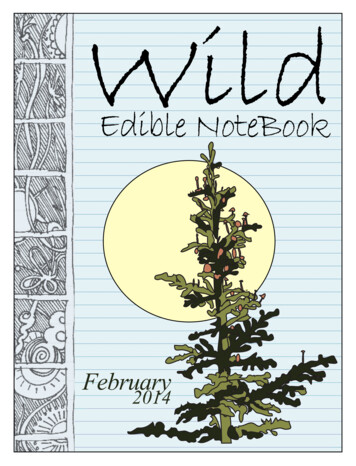


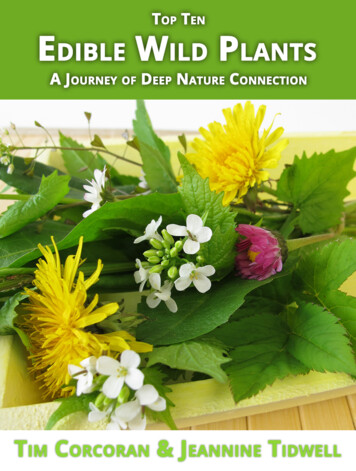
![INDEX [randycherry ]](/img/21/x-20-20tv-20fakebook-20-20hal-20leonard.jpg)
